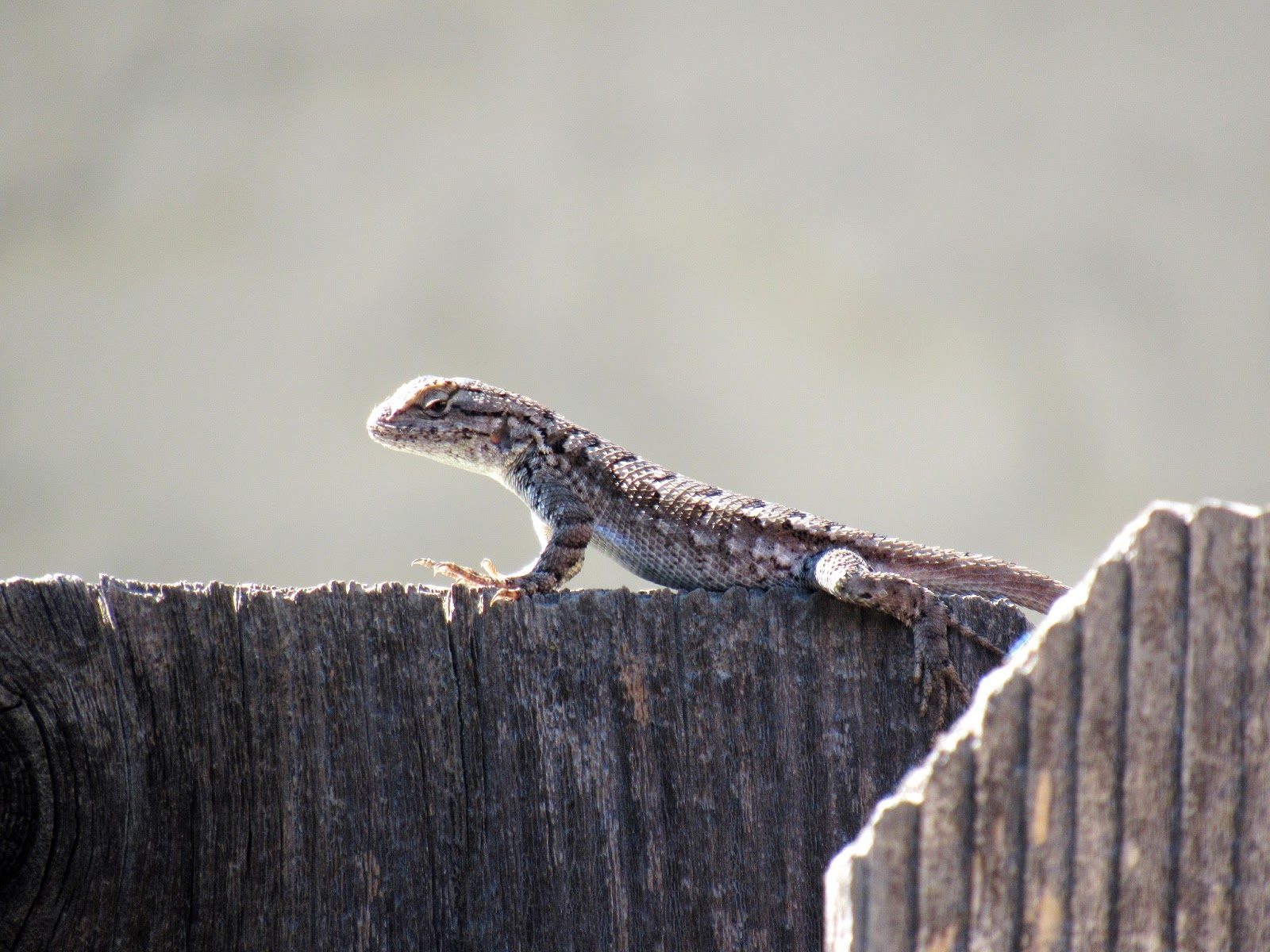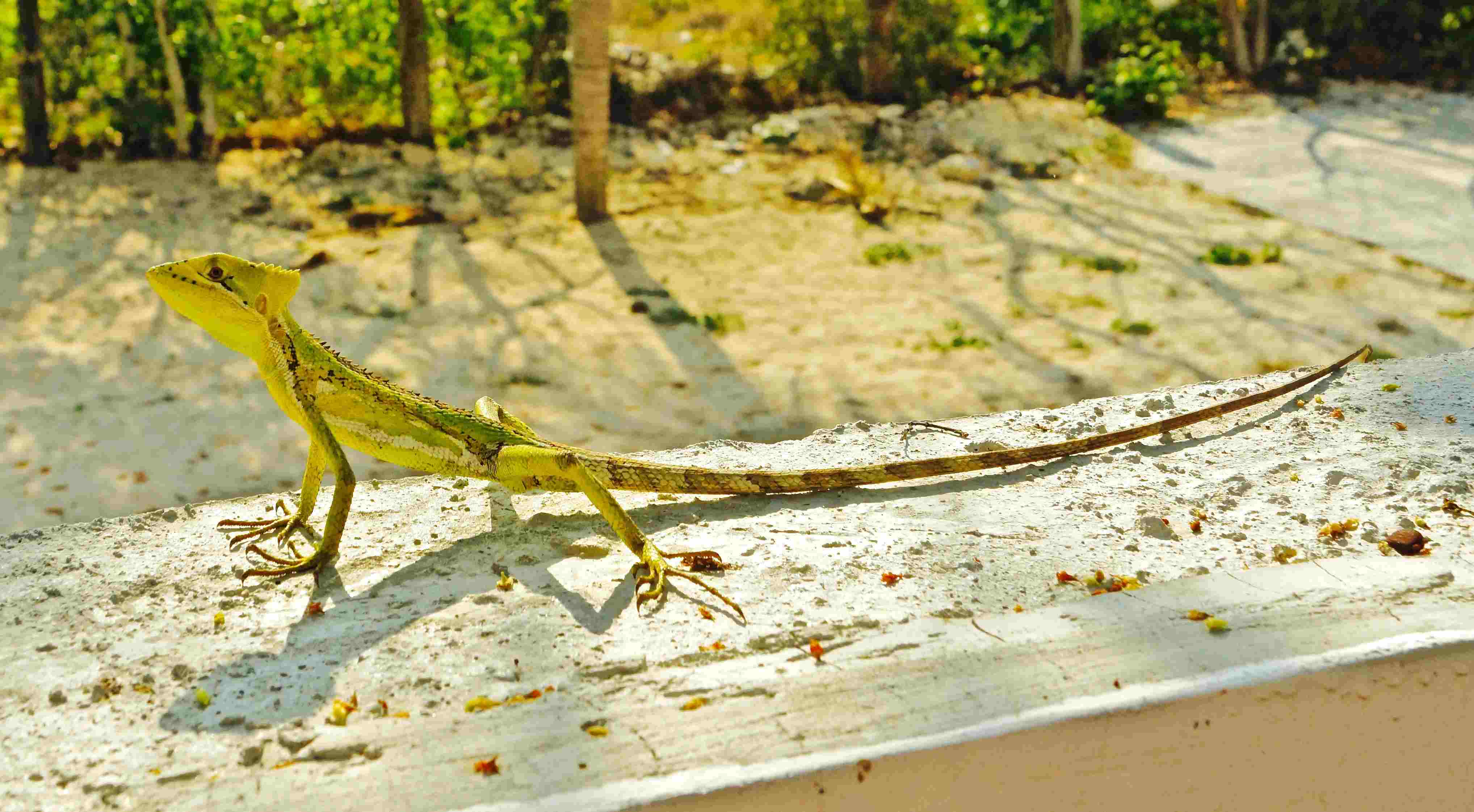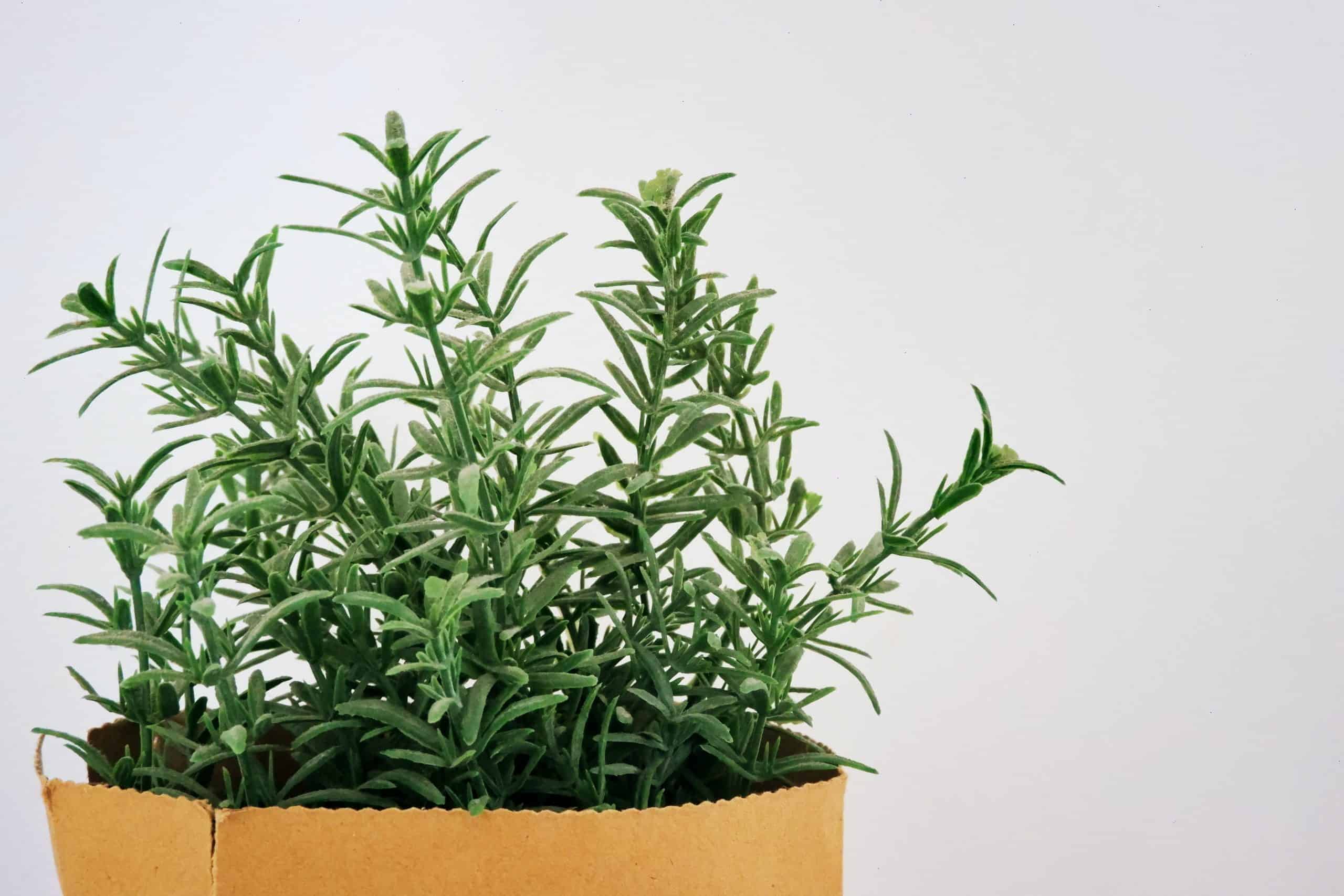Home>Gardening Tips and Tricks>Eco-Friendly Gardening>What Can I Feed A Lizard In My Backyard


Eco-Friendly Gardening
What Can I Feed A Lizard In My Backyard
Published: August 5, 2023
Discover eco-friendly gardening tips and learn what to feed a lizard in your backyard. Create a sustainable environment for your reptile friends.
(Many of the links in this article redirect to a specific reviewed product. Your purchase of these products through affiliate links helps to generate commission for Chicagolandgardening.com, at no extra cost. Learn more)
Table of Contents
- Introduction
- Factors to Consider Before Feeding Lizards in Your Backyard
- Natural Food Sources for Lizards
- Suitable Insects and Bugs for Lizard Diets in Backyards
- Vegetation and Plants That Can Be Offered to Lizards
- Foods to Avoid Feeding Lizards in Your Backyard
- Tips for Observing Lizards in Your Backyard
- Conclusion
Introduction
Welcome to the world of eco-friendly gardening and the excitement of attracting lizards to your backyard! Lizards are fascinating creatures that play a vital role in maintaining the balance of our ecosystem. By providing them with a suitable habitat and a varied diet, you can help promote biodiversity and create a harmonious environment in your own backyard.
Feeding lizards in your backyard is not only a rewarding experience but also a way to connect with nature on a deeper level. However, it’s essential to consider a few factors before offering food to these reptiles. In this article, we will explore the natural food sources for lizards, suitable insects and bugs for their diets, vegetation options, and share some valuable tips for observing them in your garden.
Creating a lizard-friendly environment starts with understanding their dietary needs and preferences. Lizards are primarily insectivores, meaning their diet consists mainly of insects and other small invertebrates. However, they may also consume vegetation and fruits, depending on their species.
By offering a variety of food sources, you can attract a diverse range of lizard species to your backyard. This not only provides them with a balanced diet but also enhances the overall ecological sustainability of your garden.
With the right knowledge and a little effort, you can transform your backyard into a haven for lizards, contributing to the preservation of these incredible creatures and promoting a healthier ecosystem.
Factors to Consider Before Feeding Lizards in Your Backyard
Before diving into feeding lizards in your backyard, there are a few important factors to consider to ensure their well-being:
- Research the local lizard species: Different lizard species have varying dietary requirements. Research the types of lizards native to your area to understand what foods are most suitable for them.
- Provide a suitable habitat: Ensure that your backyard offers a natural and lizard-friendly environment with plenty of hiding spots, like rocks, logs, and vegetation, to make lizards feel secure and comfortable.
- Water source: Lizards need access to fresh water for drinking and bathing. Consider installing a small, shallow water dish or fountain to provide a water source for them.
- Limit artificial feeding: While offering occasional supplemental feedings can be beneficial, it’s important not to rely solely on artificial feeding. Lizards should be able to find natural food sources in their environment as well.
- Observe their natural behavior: Spend time in your backyard observing the lizards’ behavior, such as their preferred basking areas and hunting grounds. This can help you understand their feeding habits and preferences.
By considering these factors, you can create an environment that is conducive to lizards’ natural behaviors and dietary needs. This will ensure a healthier and more sustainable feeding approach while also maintaining a balance in the ecosystem.
Natural Food Sources for Lizards
When it comes to feeding lizards in your backyard, providing them with natural food sources is crucial for their overall health and well-being. Here are some common natural food sources that lizards consume:
- Insects: Lizards are primarily insectivores, and their diet heavily relies on a variety of insects such as crickets, grasshoppers, mealworms, and beetles. These small creatures are excellent sources of protein and essential nutrients for lizards.
- Arachnids: Lizards may also consume arachnids like spiders and scorpions. These creatures can be found in most backyard environments and contribute to a varied lizard diet.
- Small invertebrates: Other small invertebrates like snails, slugs, and worms also form a part of a lizard’s natural food sources. These can be found in moist areas or under rocks and logs, making them easily accessible for lizards to prey upon.
- Vegetation and fruits: Depending on their species, lizards may also consume vegetation and fruits. Offer some leafy greens, flowers, and ripe fruits in your backyard to cater to the omnivorous needs of certain lizards.
By providing a diverse range of natural food sources, you can ensure that the lizards in your backyard receive a balanced and nutritious diet. This will not only support their growth and survival, but it will also help maintain a healthy ecosystem in your garden.
Suitable Insects and Bugs for Lizard Diets in Backyards
When it comes to feeding lizards in your backyard, offering a variety of suitable insects and bugs is essential to meet their dietary needs. Here are some commonly available insects and bugs that make for excellent lizard food:
- Crickets: Crickets are a staple in a lizard’s diet. They are rich in protein and easily obtainable from pet stores or by breeding them at home.
- Grasshoppers: Grasshoppers are another great option for lizards, especially larger species. These jumping insects provide a good source of protein and exercise for lizards while chasing them.
- Mealworms: Mealworms are the larvae of darkling beetles and are readily available as a live or dried food source. They are high in protein and are relished by many lizard species.
- Beetles: Various beetles, such as mealworm beetles and waxworm beetles, are also suitable for lizards. These insects are rich in nutrients and can contribute to a well-rounded lizard diet.
- Roaches: Some lizard species, like bearded dragons, enjoy eating roaches. Dubia roaches or discoid roaches are commonly used as a nutritious and sustainable food source for lizards.
It’s important to ensure the insects you offer are free of pesticides or harmful chemicals, as these can be harmful to the lizards. You can either find these insects in your backyard or purchase them from reputable suppliers, ensuring they are raised on a healthy diet themselves.
By incorporating these suitable insects and bugs into the lizard’s diet, you can provide necessary nutrition while mimicking their natural prey items. This will not only satisfy their dietary requirements but also encourage natural hunting behaviors in the lizards.
Vegetation and Plants That Can Be Offered to Lizards
While lizards are primarily insectivores, some species also incorporate vegetation and fruits into their diet. Providing a variety of vegetation can be beneficial in attracting and nourishing lizards in your backyard. Here are some vegetation and plants that you can offer to lizards:
- Leafy Greens: Leafy greens like kale, collard greens, and dandelion greens are excellent options for lizards. These greens are rich in vitamins and minerals, providing essential nutrients.
- Flowers: Many lizards enjoy munching on flowers such as hibiscus, nasturtiums, and roses. These colorful and fragrant flowers not only add beauty to your garden but also provide a source of nutrition for lizards.
- Fruits: Some lizards, like certain gecko species, enjoy consuming small fruits. Offer ripe fruits like bananas, berries, and melons in small quantities as a tasty treat for the lizards.
- Herbs: Some herbs like parsley, basil, and cilantro can be offered to lizards. These herbs are not only beneficial for their health but can also add flavor to their diet.
- Grasses and Weeds: Lizards often nibble on various grasses and weeds. Allow some patches of grass and weed growth within your backyard to provide additional grazing options for lizards.
It’s important to ensure that the vegetation offered is free from pesticides or other harmful chemicals. Additionally, remove any toxic plants from your backyard, as they can be potentially harmful to lizards.
By incorporating these vegetation options into the lizard’s diet, you provide additional variety and nutrients. This can enhance their overall well-being and contribute to their natural feeding behaviors in your backyard ecosystem.
Foods to Avoid Feeding Lizards in Your Backyard
While it’s important to provide a diverse diet for lizards in your backyard, there are certain foods that should be avoided. These foods can be harmful or toxic to lizards and may have negative effects on their health. Here are some foods to avoid feeding lizards:
- Insects caught from pesticide-treated areas: Avoid feeding lizards insects that have been exposed to pesticides or chemicals. These substances can be toxic to lizards and cause harm to their overall well-being.
- Processed or packaged food: Lizards require a diet that closely resembles their natural prey items. Processed and packaged foods, such as commercial lizard diets or human food, may not provide the necessary nutrients and can negatively impact their health.
- Toxic plants: Some plants are toxic to lizards and can cause severe health issues or even death. Familiarize yourself with the common toxic plants in your area and ensure they are not present in your backyard.
- Fatty foods: Lizards have specific dietary requirements, and excessive fat consumption can lead to obesity, metabolic disorders, and other health problems. Avoid feeding lizards fatty foods like fried insects or fatty cuts of meat.
- Inappropriate-sized prey: Keep in mind the size of the lizard and its feeding capabilities. Avoid offering prey items that are too large for the lizards to consume comfortably, as this can cause choking or other digestive problems.
It’s crucial to prioritize the lizards’ health and well-being when considering what to feed them. Stick to natural, pesticide-free food options and provide a balanced diet that mimics their natural feeding habits to ensure their optimal growth and vitality.
Tips for Observing Lizards in Your Backyard
Observing lizards in your backyard can be an exciting and educational experience. Here are some tips to help you get the most out of your lizard-watching adventures:
- Create a lizard-friendly habitat: Provide a suitable environment for lizards to thrive in your backyard. This includes providing shelter, such as rocks and logs, as well as a variety of plants and water sources.
- Be patient and still: Lizards are often wary creatures that may flee when they sense movement or noise. To observe them up close, remain still and patient for extended periods, allowing the lizards to become comfortable with your presence.
- Observe during ideal times: Lizards are ectothermic, meaning their body temperature and activity levels depend on external conditions. Optimal observation times are during sunny, warm periods when lizards are most active, such as in the morning or afternoon.
- Use binoculars or a camera: If you want to examine lizards from a distance, use binoculars to get a closer look. Alternatively, use a camera with a telephoto lens to capture high-quality photos without disturbing the lizards.
- Identify common lizard species: Familiarize yourself with the common lizard species found in your area. This knowledge will enhance your observation skills and allow you to learn more about the behaviors and habits of specific species.
- Record your observations: Keep a journal or take notes of the lizards you encounter, their behaviors, and any unique observations. This can serve as a valuable reference and help you track patterns in their behaviors over time.
- Create a water feature: Lizards are often attracted to water sources, such as shallow ponds or birdbaths. Adding a water feature to your backyard can increase the likelihood of lizard sightings.
- Respect their space: While observing lizards, remember to maintain a respectful distance and not disturb or interfere with their natural behaviors. Avoid chasing or handling them, as this can cause stress or harm to the lizards.
By following these tips, you can enhance your enjoyment of observing lizards in your backyard. Not only will you gain a deeper appreciation for these fascinating creatures, but you will also contribute to their conservation by creating a lizard-friendly environment.
Conclusion
Feeding and observing lizards in your backyard can be a fulfilling and eco-friendly activity that promotes biodiversity and contributes to a healthier ecosystem. By understanding the various factors to consider, such as providing a suitable habitat, offering natural food sources, and avoiding harmful foods, you can create an environment that supports the well-being of lizards.
By providing a diverse diet of suitable insects and bugs, as well as incorporating vegetation and plants into their diet, you can ensure that lizards receive the necessary nutrients for optimal health. Avoiding toxic plants, processed foods, and inappropriate-sized prey is essential for their overall well-being.
Furthermore, taking the time to observe lizards in your backyard can offer valuable insights into their behaviors, habits, and natural interactions with their environment. Patience, stillness, and respecting their space are key to successful lizard-watching experiences. Remember to record your observations, identify common lizard species, and create a lizard-friendly habitat to further enhance your interactions.
By engaging in eco-friendly gardening practices and providing a conducive environment for lizards, you are actively contributing to the preservation of these fascinating creatures and fostering a more sustainable ecosystem in your own backyard.
So, take a step further in connecting with nature, embrace the wonders of lizards, and create a haven for these incredible creatures in your eco-friendly garden. Your efforts will not only benefit these reptiles but also enrich your own connection with the natural world.









